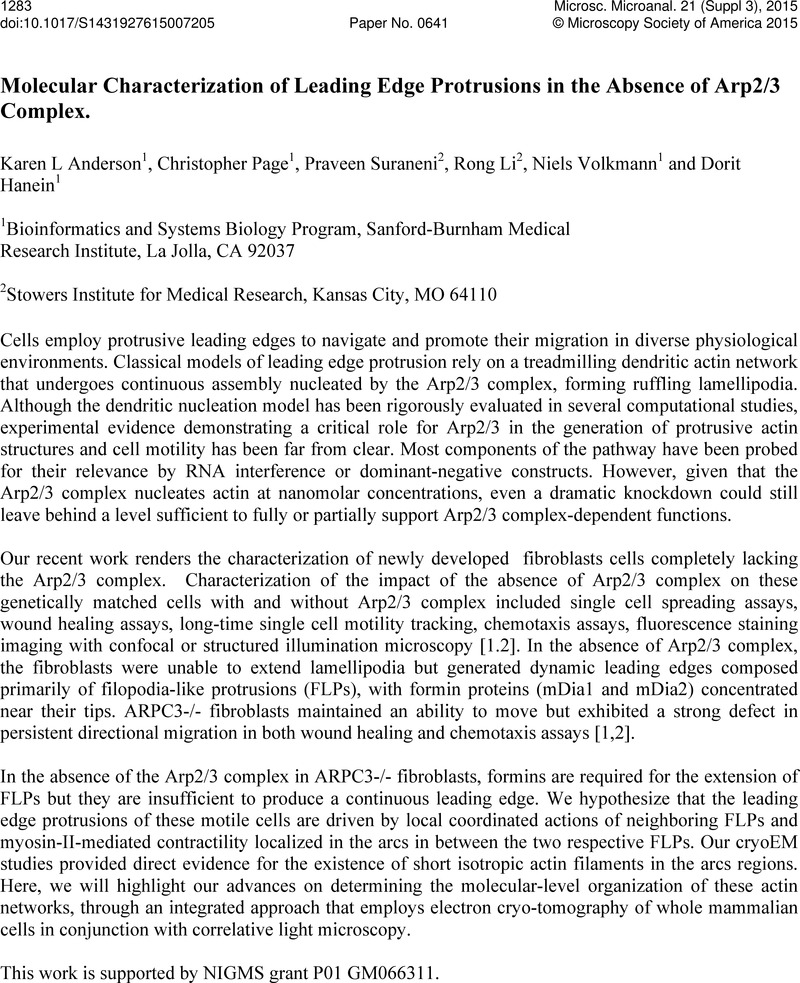No CrossRef data available.
Article contents
Molecular Characterization of Leading Edge Protrusions in the Absence of Arp2/3 Complex
Published online by Cambridge University Press: 23 September 2015
Abstract
An abstract is not available for this content so a preview has been provided. As you have access to this content, a full PDF is available via the ‘Save PDF’ action button.

- Type
- Abstract
- Information
- Microscopy and Microanalysis , Volume 21 , Supplement S3: Proceedings of Microscopy & Microanalysis 2015 , August 2015 , pp. 1283 - 1284
- Copyright
- Copyright © Microscopy Society of America 2015
References
[1]
Suraneni, P, Rubinstein, B, Unruh, JR, Durnin, M, Hanein, D & Li, R (2012). The Arp2/3 complex is required for lamellipodia extension and directional fibroblast cell migration. J Cell Biol.
197, 239. PMC3328382.Google Scholar
[2]
Suraneni, P, Fogelson, B, Rubinstein, B, Noguera, P, Volkmann, N, Hanein, D, Mogilner, A & Li, R (2015). A mechanism of leading edge protrusion in the absence of Arp2/3 complex. MolBiol Cell. Jan 7 [Epub ahead of print].CrossRefGoogle Scholar


